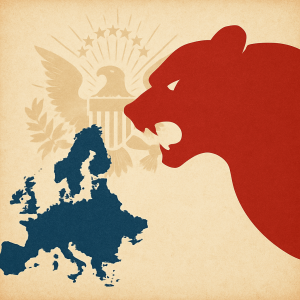It is not impossible. It is by no means out of the question that November 2022 will go down in history as the month of freedom that would have seen Iran begin the fall of its theocracy after the Ukrainians took back Kherson and American voters made Trump a loser.
We are not there yet. It is indeed far from over because there is no organised opposition ready to take over in Tehran, four-fifths of the economy is in the hands of the regime, on which many people obviously depend, and because in addition the regime controls the armed forces, the judiciary and television. The mullahs are anything but powerless and yet it will be two months, this Wednesday 16 November, since they failed to stop the demonstrations that their police provoked by murdering a young girl who was inadequately veiled.
Neither the live fire, nor the police rapes, nor the mass arrests, nor the murders of detainees have done anything. On the contrary, the savagery of this repression unites the countryside and the big cities, white-collar and blue-collar workers, Shiites, Kurds and Sunnis in a common rejection of the regime. This is no longer the hope of liberalisation expressed in 1997 by the electoral mobilisation that brought a religious reformer, Mohammad Khatami, to the presidency of the Republic. Nor is it the ‘green revolution’ of 2009, which led the urban middle classes to months of street protests against the fraudulent re-election of a conservative president. At that time, Iranians were reminding the government to abide by its laws, just as they were to ask it, with the popular riots of 2019, to stop ignoring the misery of the poorest, but now it is the whole of Iran that, as a block, is raising the flag of the democratic revolution, the one that ousted the shah in 1979 before the mullahs confiscated it.
More than 40 years have passed since then and, under the veil, Iran has totally changed with a 75% urbanised population, a birth rate similar to that of the European Union, 40 million Internet users and an average age of marriage of 26, whereas it is authorised from the age of 13 for girls. Under religious arbitrariness, Iran lives to the rhythm of the West and the power of the mullahs is all the more threatened as the Supreme Guide, Ali Khamenei, head of the religious apparatus and the regime’s leading figure, is old and ill, his succession looks difficult and the Revolutionary Guards, the regime’s army, is increasingly tending to take precedence over a clergy divided between conservatives and reformers.
Once again, with its women burning their veils and the incredible bravery of its demonstrators, Iran has become the avant-garde of the Muslim world. It had been with the overthrow of the Shah. It became so again in 2009 with its Green Revolution, which foreshadowed the Arab Spring of 2011. It is so today with its aspiration for freedom and gender equality, the echo of which can be heard throughout the Middle East.
Iran is boiling and anxiety is so great in the circles of power that religious dignitaries are calling for the organisation of an institutional referendum while members of parliament are demanding death for the demonstrators, while the former president of Parliament, Ali Larijani, an enlightened conservative, would like the wearing of the veil to be no longer imposed. This power no longer knows where it is going or how to go on living as it did before. It can endure by force, but Talleyrand and then Clemenceau said: “You can do everything with bayonets, except sit on them”.



